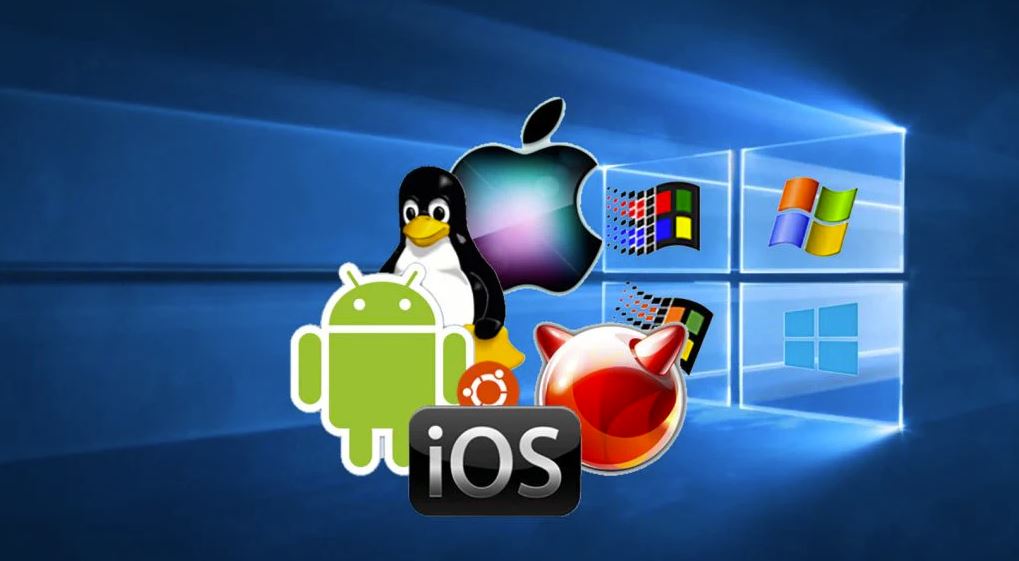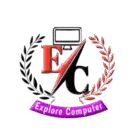What is Operating system
 What is Operating system, An Operating System (OS) is a program which acts as an interface between the user and the computer hardware. The interface enables a user to utilise hardware resources very efficiently.
What is Operating system, An Operating System (OS) is a program which acts as an interface between the user and the computer hardware. The interface enables a user to utilise hardware resources very efficiently.
Operating system is an organised collection or integrated set of specialised programs that controls the overall operations of a computer. It is a program that must be on any computer for proper booting.
Functions of Operating System
- Process Management A process is the basic unit of execution in the operating system. It is a process by which operating system can control the planning, monitoring and performance of a CPU.
- Memory Management It is a process of controlling and coordinating computer memory. It ensures that all processes are able to access their memory or not.
File Management It is the main function of operating system. It manages all data files in a computer system. At the time of execution of a program, the operating system also performs the task of copying files from secondary memory to primary memory. - Device Management It is a process of managing the operation and maintenance of input/output devices. It also facilitates the interface between all the connected devices.
Types of Operating System
1. Batch Processing Operating System
In this operating system, a number of jobs are put together and executed as a group. This operating system is responsible for scheduling the jobs according to priority and the resource required. e.g. Unix.
2. Single User Operating System.
It is a type of operating system which allows only one user at a time. Operating system for Personal Computer (PC) is a single user OS. They are designed to manage one task at a time. e.g. MS-DOS, Windows 9X.
3. Multi User Operating Systern
This OS allows multiple users to access a computer system concurrently. It is used in computer networks that allow same data and applications to be accessed by multiple users at the same time. e.g. VMS.
4. Multi-Tasking Operating System
In this operating system, more than one process can be executed concurrently. It also allows the user to switch between the running applications. e.g. Linux, Unix, Windows 95.
Multi-tasking OS further classified into two types
- (i) Preemptive Multitasking OS It is a type of multitasking OS that allows computer programs to share operating system and underlying hardware resources.
- (ii) Cooperative Multitasking OS It is the simplest form of multitasking. In it, each program can control the CPU for as long as it need it.
5. Time Sharing Operating System
This operating system allows multiple programs to simultaneously share the computer resources. It provides to each process to be run on. e.g. Mac OS.
6. Real Time Operating Sytem (RTOS)
These operating systems are designed to respond to an event within a pre-determined time.
They are often used in applications such as flight reservation system, military applications, etc. This type of operating system increases the availability and reliability of the system. e.g. Linux.
There are two types of real time operating system
- (1) Hard Real Time OS In this RTOS, all the tasks are required to be completed within the specified time limit.
- (ii) Soft Real Time OS In this RTOS, all the tasks are not required to be completed within the specified time limit.
User Interface
The system which provides the facility to the user to interact with the computer is called user interface. It allows users to easily access and communicate with the applications and the hardware.
The user can interact with the computer by using mainly two kinds of interface
1. Graphical User Interface (GUI)
It is a computer program that enables a person to communicate with a computer through the use of symbols, visual metaphors and pointing devices. It is best known for its implementation in Apple products.
The first graphical user interface was designed by Xerox Corporation in 1970s. GUls can be found in handheld devices such as MP3 players, portable media players, gaming devices, etc.
2. Character User Interface (CUI)
It is also known as Command Line Interface (CLI).
CUI is a mechanism of interacting with a computer system or software by typing commands to perform specific tasks.
CUI only uses text types one after another just as commands used in MS-DOS.
Booting
Booting is starting up a computer or computer. appliance until it can be used. It can be initiated by hardware such as a Start button or by Software command
There are two types of booting
- Cold Booting When a computer is turned ON after it has been completely shutdown.
- Warm Booting When a computer is restarted by pressing the combination of Ctrl + Alt + Del keys or by Restart button.
Some Important Operating Systems
Some popular operating systems are as follows
1. UNIX
The first version of Unix was developed in 1969 by Ken Thompson and Dennis Ritchie. It is primarily used to a server rather than a work station and should not be used by anyone who does not understand the system.
2. Apple Macintosh
(Mac OS) It was introduced in January, 1984 by Steve Jobs and was initially named as system software, which was later renamed as Mac OS.
Versions of Mac OSX are Yosemite, Mavericks, Mountain Lion, Tiger. Tiger Panther, Jaguar, etc.
3. LINUX
The first Linux Kernel was released in September, 1991 by Linus Torvalds. It is an open source software. Linux is similar to Unix in operations. It is difficult to understand by anyone. Kernel is the core of the operating system that supports the process by providing a path to the peripheral devices.
4. Microsoft Windows
It is an operating system, based on GUI, developed by Microsoft. Microsoft first introduced an operating environment named Windows in November 1985.
MS-DOS (Microsoft-Disk Operating System)
The DOS OS was developed by Microsoft in 1980 for micro computers. MS-DOS was the first operating system that run on PC developed by IBM Corporation in 1981.
DOS is a single user operating system. It is the only operating system which can be loaded in the main memory of the computer using a single disk.
Structure of DOS
There are four essential programs associated with the control of computer and the way it interacts with them
- 1. Boot Record It includes loading the operating system into main memory. It is the main program of MS-DOS.
- 2. Basic Input/Output System (BIOS. sys) It provides an interface between the hardware and programs.
- 3. The MS-DOS. sys Program It is a collection of program routines and data tables that provide high level programs such as application. programs.
- 4. The Command.com Program It provides a standard set of commands that gives users access to file management, configuration and miscellaneous functions.
Configuration of DOS
Config, sys, Autoexec. bat and their files provide the environment to computer to set commands
- (i) Config. sys It adjusts the system acoording to commands.
- (ii) Autoexec.bat When the system is powered ON, this file executes in automatically command line.
Important Extensions and their Meanings
Extensions Meanings. Executable files
- .com Command files
- .bat Batch files
- .doc Document files
- .txt Text files
- .prg Program files
- .over over lays
- .sys system files
Types of MS-DOS Commands
There are two types of MS-DOS commands as follows
- 1. Internal Commands These commands are automatically loaded into main memory when the booting process gets completed. e.g. DATE, TIME, VER, VOL, DIR, COPY, CLS, etc.
- 2. External Commands These commands require external files to be loaded in the computer to run. e.g. Checking disk, comparing disk, formatting, etc.
Mobile Operating System
This OS operates on Smartphones, Tablets and Digital Mobile devices. It controls mobile devices and its design supports wireless communication and different types of mobile applications. It has built-in support for mobile multimedia formats.
Some popular mobile operating systems are as follows
1. Android
It is a mobile OS developed by Google, which is based on Linux (main part of operating system). It is basically designed for touch screen mobile devices like Tablets, Smartphones, etc. Now-a-days, it is most widely used in mobile phones. The latest version of Android is Android 11, which was released on 8th September, 2020.
2. Symbian
It is the OS developed and sold by Symbian Ltd. It is an open source mobile OS designed for Smartphones It has been used by many major handset manufacturers including Motorola, Nokia, Samsung, Sony, etc. The latest version of Symbian is Nokia Belle, which was released on 2 October, 2012.
3. iOS
It is the popular mobile operating system developed by Apple Incorporation. This operating system is commonly used in Apple iPhone, iPod Touch, iPad, etc. The latest version of iOS is iOS 14.3, which was released on 14 December, 2020.
4. Black Berry
It is the most secure operating system used in leading Smartphones developed by Black Berry company. It also supports WAP 1.2. The latest version of BlackBerry is Black Berry OS 7.1.0, which was released in 2013.
5. Windows Phone
It is a mobile operating system developed by Microsoft in 2010, for smartphones. It is commercial proprietary software. Its latest version is 8.1, which was released on 2 June, 2015.
